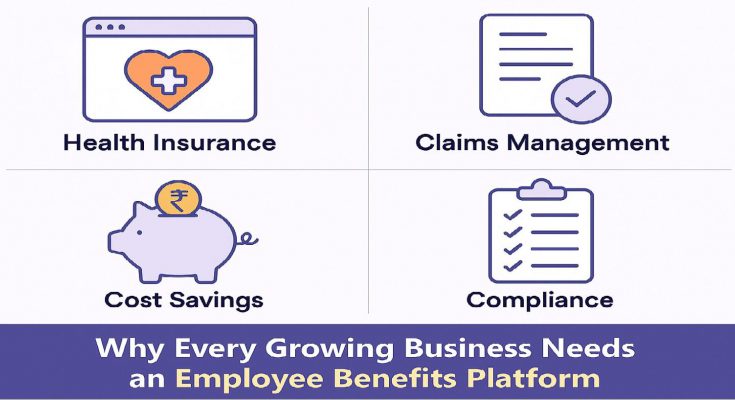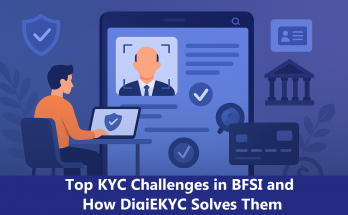The modern workforce has evolved, so have its expectations. Beyond paychecks and perks, employees now seek structured access to health coverage and dependable benefits when evaluating job offers or choosing to stay with an employer. Besides, growing awareness around employee well-being has also transformed how organisations are perceived as employers. For mid-sized companies and start-ups aiming to attract and retain skilled talent, streamlined group mediclaim management plays a crucial role in building trust, improving employee experience, and standing out in a competitive talent landscape.
For growing businesses, especially those with expanding teams or distributed operations, traditional approaches, such as spreadsheet tracking, manual claim updates, and back-and-forth with TPAs, often fall short. These methods delay responses, create information gaps, and place undue pressure on HR teams during time-sensitive situations. This is where an employee benefits management platform becomes essential. By bringing health insurance and mediclaim management into one unified system, it helps companies save time, avoid manual errors, and deliver a more responsive benefits experience to employees.
How Outdated Tech Disrupts Mediclaim Management
Employee health benefits in many growing enterprises are managed either through legacy systems with limited automation capabilities or through entirely manual workflows. While outdated systems and old benefits management practices may suffice for small teams, they often begin to show strain as the organisation expands. With each new employee or policy cycle, the margin for error widens. A missed endorsement, outdated policy document, or unclear claim update can easily lead to error or delay, at the exact moment when timely action is most needed.
- High IT Costs
On-premise/legacy systems account for 50+% of IT overhead - Lack of Agility
Complex update cycles, slow upgrades and limited responsiveness - Scalability Issues
Growth in users and data flow overwhelms existing systems - Compliance Risks
Compliance lag increases legal and audit liabilities - Poor Integration
Data silos block analytics and collaboration between departments - Long Upgrade Cycles
Legacy platforms delay responsiveness to changing business needs
- Excessive Admin Time
Manual tasks consume the majority (over 60+%) of HR bandwidth - Error-Prone Processes
Manual verifications and entries lead to frequent processing errors - Poor Coordination
Fragmented communication with insurers/TPAs and internal approvers - Low System Visibility
HR lacks tools to monitor real-time claim or approval progress - Poor Reporting & Insights
Slow, inaccurate reports hinder benefits evaluation and policy review - High Training Burden
Outdated systems require frequent training due to complex interfaces
- Delayed Claim Settlements
Claims take 2–3x longer to process compared to digital systems - No Transparency
Employees cannot track claim status in real time, leading to confusion - Limited Access
No mobile apps or portals for self-service claims or benefit tracking - Frequent Errors
Manual data entry and paper forms cause mistakes and rework - Poor Communication
Lack of timely updates from HR or insurers frustrates employees - Low Awareness
Employees are unaware of available benefits or how to use them
All common errors and delays in mediclaim processing and resolution often stem from outdated group health insurance software, fragmented communication between insurers, third-party administrators, and internal teams, and a lack of real-time visibility into claim status. For Human Resources (HR) teams, this leads to administrative bottlenecks and increased operational pressure and for employees, it undermines trust in employer-sponsored healthcare benefits. As the demand for streamlined, automated benefits administration grows, organisations must re-evaluate their dependence on legacy systems.
How a Digital Group Mediclaim Platform Streamlines Claims Administration
Managing group health insurance and employee benefits often becomes complex when handled through disconnected systems and manual processes. A group mediclaim management system addresses long-standing inefficiencies in claims management by introducing structured digital workflows, built-in analytics, a unified benefits platform optimises every stage of employee benefits management.
The following points outline how these systems facilitate better coordination and operational execution in claims management:
I. Workflow Automation for Routine Tasks
A platform automates policy checks, document verification, and entitlement processing. This limits manual steps, reduces turnaround time, and improves process control. Thus, teams can redirect efforts toward handling exceptions, managing approvals, and monitoring outcomes more effectively.
II. Digital Claim Submission Processes
Claims are submitted through a structured digital flow instead of paper or email-based methods. Each step captures mandatory fields in sequence, preventing data gaps and delays. As a result, administrators receive ready-to-process claims without needing additional clarification.
III. Claim Status Visibility in Real Time
A platform provides real-time updates through an integrated dashboard. Employees and administrators can independently track each claim’s stage. In turn, this reduces follow-ups, supports timely interventions, and ensures transparency throughout the claim cycle.
IV. Structured Claim Resolution Experience
Each claim moves through a predefined workflow from submission to closure. Employees complete steps independently, while administrators track exceptions and act as needed. In doing so, the platform enables consistent, uninterrupted resolution without repeated coordination.
V. Centralised Claim Data Repository
All claim-related records, documents, and logs are stored in a single system. This supports immediate access and accurate referencing. Consequently, audits, verifications, and internal reviews can be completed without dependency on external sources or scattered data.
VI. Timely Notifications and Communication
The platform sends automated alerts at key claim stages. These notifications keep employees, HR teams, and processors aligned. Therefore, the need for manual follow-ups reduces, and communication remains consistent across all stakeholders involved.
Insurer
In essence, a group health insurance software transforms benefits administration from a reactive task into a proactive, transparent, and tech-enabled experience. This improves claim outcomes and policy tracking while reducing operational effort. At the same time, it builds employee trust and enables leadership and finance teams to plan insurance budgets, manage risks, and allocate resources with better accuracy.
E-Well Benefits: The Trusted Group Mediclaim Platform for Growing Businesses
The growth of an organisation often brings challenges in group insurance claim management, demanding scalable and integrated solutions. Without a reliable digital framework, teams often face delays, fragmented communication, and rising administrative workload. E-Well Benefits, developed by Tech Anand Rathi, is designed to address these challenges by aligning insurance workflows across HR, Admin, Employees, and TPAs within a single, connected platform.
E-Well Benefits Features Overview
Each function integrated within E-Well Benefits contributes to a connected experience across HR, Finance, and Employee engagement teams. The suite of modern features within the health insurance management software makes it suitable for organisations of varied sizes and sectors.
What Changes When You Manage Benefits with E-Well Benefits
E-Well Benefits supports businesses in formalising their employee health benefits through an integrated system that focuses on usability, compliance, and visibility. Rather than digitalising merely for automation, a group benefits management platform is designed to address the distinct needs of each stakeholder, reducing delays, minimising escalations, and ensuring a consistent experience organisation-wide.
E-Well Benefits: Before and After Scenarios
E-Well Benefits
- Paper-based processes and scattered benefit records
- Slow approvals and delays in sharing policy details
- Frequent follow-ups with TPAs and insurers for claim status
- Manual tracking through emails, spreadsheets, and phone calls
- Employees depend on HR for every update or document
E-Well Benefits
- Digital dashboards for employees, HR, and admins
- Instant approvals, automated workflows, and real-time alerts
- Direct access to e-cards, policy documents, and claim status
- All updates and records available online, anytime
- Minimal manual follow-ups, freeing up HR and employee time
What Makes a Benefits Platform a Baseline Necessity for HR, Accounts, and Employees
As organisations grow, the expectations around employee health coverage also evolve. Employees look for not just access to group insurance, but clarity on their entitlements, visibility into claim progress, and timely resolution when support is most needed. At the same time, internal teams face rising complexity in handling endorsements, renewals, document tracking, and insurer coordination, especially when relying on manual or disconnected processes.
How a Benefits Management Platform meets the HR, Accounts and Employee Needs, all in one system
HR Needs
- Policy enforcement & compliance
- Employee lifecycle visibility
- Simplified enrolment & endorsements
- Reduced manual work and follow-ups
- Real-time access to claim status
Finance / Accounts Needs
- Budget control and tracking
- TPA billing reconciliation
- Contribution calculations
- Financial compliance & audit readiness
- Automated reimbursements
Employee Needs
- Access to policy info and e-cards
- Real-time claim tracking
- Transparent benefit utilisation
- Intuitive mobile/web interface
- Self-service options
What the platform delivers across all stakeholders
- Unified, digitised ecosystem
- Role-based access control
- Faster turnaround times
- Fewer escalations
- Greater clarity and transparency
- Compliance-ready workflows
A benefits management system becomes essential for bridging operational gaps between teams involved in mediclaim administration. It establishes a predictable and scalable framework for managing group mediclaim policies, enabling HR and Accounts teams to align workflows, ensure compliance, and reduce administrative overhead. Beyond digital convenience, such platforms promote accountability, transparency, and long-term continuity in managing employee health benefits.
Trust E-Well Benefits to Streamline Your Group Mediclaim Operations
Investing in an employee benefits management software (cloud-based) is not just a process improvement; it’s a step toward building a stronger employee experience, a more compliant insurance process, and a benefits program that can support the organisation’s scale, structure, and goals over time.
E-Well Benefits is designed to serve the purpose when it comes to group mediclaim management. Built around practical business workflows, it brings together all stakeholders, such as HR, Admin, Employees, and TPAs, on a common system. As a result, growing businesses are better equipped to manage their benefits infrastructure with clarity, accuracy, and consistency across every interaction.




